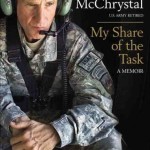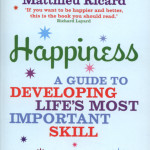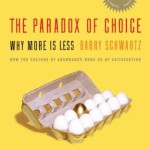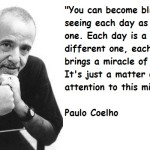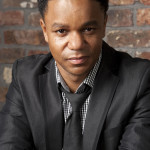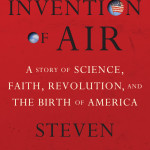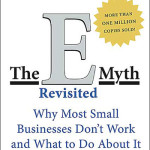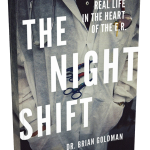Thinking about the Future distills the expertise of three dozen senior foresight professionals into a set of essential guidelines for carrying out successful strategic foresight. Presented in a highly scannable yet personable style, each guideline includes an explanation and rationale, key steps, a case example, and resources for further study. The 115 guidelines are organized into six sequential categories that mirror the phases of a strategic foresight activity, namely Framing, Scanning, Forecasting, Visioning, Planning, and Acting. Executives will find both the guidelines and the framework invaluable for understanding what it takes to successfully explore the future, while analysts who actively carry out strategic foresight projects will find the book an indispensable reference that they turn to again and again.
Excerpt From The Book
There has perhaps never been a time in human history where strategic foresight is more needed. Whether for business, government, education, nonprofits, or even individuals, the ability to – as Richard Slaughter suggests in the preface – “create and sustain a variety of high-quality forward views and to apply the emerging insights in useful ways” is at a premium. Yet precious little guidance is available on the best ways to do this. This book is not an explicit methodology text, but rather suggests what executives and analysts should be thinking about and doing when contemplating or performing activities involving strategic foresight. It aims at communicating the collective wisdom of three dozen expert contributors for attaining excellence in strategic foresight. Thus, its primary goal is to provide readers with clear and useful guidance regarding how best to practice strategic foresight.
This guidance is presented in the form of guidelines that represent a distillation of best practice. The presentation style is brief and to the point -designed to provide essential, need-to-know information that can be immediately put into practice. We believe that analysts and organizations that follow these guidelines will be more effective than those that do not.
Many practicing analysts today have little experience or formal training in strategic foresight. This work addresses that gap by cataloging the best guidelines for successfully applying strategic foresight, offered by professionals in the field today. It is intended both for those new to strategic foresight who would benefit from a reference guide, and for more experienced practitioners who will be able to pick out ideas to refine and improve their practices. As organizations become more efficient, payrolls are shrinking and more analysts are being tasked with activities that require strategic foresight. At the same time, analysts find themselves with few places to turn for readily available and applicable guides on how to do it. Providing that guidance is the primary aim of this book. [From: Amazon.com]
Two practicing foresight experts lay out guidelines for strategic thinking professionals.
“If you don’t know where you’re going, you may wind up somewhere else,” baseball player Yogi Berra famously said. This singular quote encapsulates perfectly the danger of operating without a clear objective, much less a plan to reach that objective. If a corporation or organization can’t even give words to the place it would like to be, then it will likely lack the vocabulary to describe why things went askew (when they inevitably do) or how to get back on a more desirable course. “Knowing where you’re going” is also the animating theme of Thinking About the Future: Guidelines for Strategic Foresight,edited by futurists Andy Hines and Peter Bishop.
“Many practicing analysts today have little experience or formal training in strategic foresight,” they write in the introduction. “This work addresses that gap by cataloging the best guidelines for successfully applying strategic foresight, offered by professionals in the field today. It is intended both for those new to strategic foresight who would benefit from a reference guide, and for more experienced practitioners, who will be able to pick out ideas to refine and improve their practices.”
The book’s principal sections focus on framing, scanning, forecasting, visioning, planning, and acting. Each contains what Hines and Bishop feel are the most important guidelines for creating workable action agendas and institutionalizing strategic thinking and intelligence systems at the leadership level.
- Framing: “defines the scope and focus of problems requiring strategic foresight,” they write. This might include exploring the amount of research required to address a certain objective before beginning an actual course of research and constructing both positive and negative images of the future. “Consciously develop positive expectations from the very beginning of a foresight activity,” the book urges. “Deal with any cynicism and criticality right away. A common mistake of teams in a foresight activity is to look only for negative signs and miss the positive ones.”
- Scanning: “Once the team is clear about the boundaries and scope of an activity, it begins to scan the external environments for information and trends relating to the issue at hand,” write Hines and Bishop, who advise would-be strategists to look at how the past and present are affecting the issue at hand and familiarize themselves with sources or the views that might, at first glance, seem tangential to the topic. To ignore potential influences simply because you don’t have an apparatus to deal with them carries the risk of not developing effective strategies. Hines and Bishop cite the experience of consulting futurist Joe Coates who was engaged by the U.S. Environmental Protection Agency (EPA) to review emerging environmental issues. He pointed out that noise can also be a source of pollution as it can add to stress and hearing loss. The EPA, however, did not have a mechanism to deal with the unorthodox concept of noise as a pollutant. As a result, noise pollution has risen as a threat to human health.
- Forecasting: defined by the authors as “generating the widest range of creative possibilities, then consolidating and prioritizing the most useful for the organization to actively consider or prepare for as it moves forward.” One strategy, follow the example of science-fiction writers, and “think of alternative futures and alternative realities. Non-invasive injections, communicators, voice control, and pervasive computing on the technical side, U.S.-Russian cooperation, feminization, and race integration on the sociopolitical side were in books and on television screens long before they diffused to everyday life.”
- Visioning: according to the authors, is how one brings “the consideration of the future back to the present by addressing the question, ‘So what?’ Given the future possibilities outlined by Forecasting, what does the organization want to do?” The keys to successful visioning, Hines and Bishop write, are identifying implications, challenging assumptions, and thinking “visionary,” meaning, big.
- Planning: the bridge between vision and action. This step of the strategic process involves evaluating strategic options. “Make the human context central to any strategic foresight activity. Do not be overly enamored with industry analysis, technology, or business trends and forget to overlook the role of people,” the authors warn. “Many activities produce impressive reams of data but haven’t thought through how the people affected would react or respond in the proposed future. Considering different sociological contests can help the organization respond to a wider range of needs – be they demographic, sociological, and ethnographic physiological, psychological, etc.”
- Acting is the final stage of the strategic foresight activity. While it seems straightforward enough, this stage should, according to the authors, involve the creation of a comprehensive intelligence system to provide ongoing external and internal feedback on the effectiveness of the strategy that has been implemented.
Poking through the neatly segmented subsections and copious bullet-points in Thinking About the Future, the casual reader may be daunted by the complexity of these various strategies, and best-practice methods, many of which seem gratuitous if not redundant. In terms of completing the mundane chores that make up daily life for the majority of the world’s inhabitants, the subtle difference between forecasting and visioning seems a point unworthy of serious consideration, much less its own book chapter. If you attempted to frame, scan, and plan all the possible ramifications of getting a glass of water from the tap, as opposed to buying a bottle, or waiting for the icebergs to melt, etc., you would likely faint from dehydration.
But, as is so often the case, behavior that is neurotic on the level of the individual may make perfect sense for corporate boards, organizations, or any other body where a handful of unfortunate souls are tasked with making decisions that could affect hundreds, if not thousands of people. Few could dispute that Captain E.J. Smith and his crew should have been thinking strategically well before that iceberg appeared on the port bow of the Titanic.
In this way, Hines, Bishop, and the other contributors perform a valuable service by reminding us that it’s best to plan, not only for the known journey, but also for dealing with the obstacles along the way, and thus avoiding, in the words of Berra, “winding up someplace else.” [From: WFS.org]
Thinking about the Future
An essential reference guide to help executives, analysts, and educators prepare for the future
This highly scannable book provides examples, benefits, and key steps that will help leaders securely position their organizations for years to come
“There has perhaps never been a time in human history when strategic foresight is more needed,” says futurist Andy Hines in the introduction to his new book, Thinking about the Future: Guidelines for Strategic Foresight(Social Technologies, February 2007).
Precious little guidance is available for executives, analysts, and educators seeking the best way to plan and prepare for the future. That is why Hines and Peter Bishop put together the 231-page paperback, which distills the expertise of 36 world-renowned futurists into an easily scannable guidebook.
Back to the future: What is strategic foresight?
Because the future is not predetermined or predictable, future outcomes can be influenced by our choices in the present, Hines and Bishop explain—and that is where strategic foresight comes into play.
At once highly creative and methodical, strategic foresight gives organizations the ability to create and maintain a high-quality forward view to detect threats and opportunities before they reach mainstream awareness, to guide policy, and to shape strategy. The ultimate goal of strategic foresight is to make better, more informed decisions in the present—making it the ideal tool for exploring new markets, products, and services, or more generally for successfully navigating the rapids of today’s constantly shifting, increasingly complex global environment.
“Although this is a highly logical approach to planning for the future, we don’t expect leaders and managers of companies to know how to do it without any training,” says Hines. “In fact, the reason we wrote the book was to provide essential, need-to-know information that can immediately be put into practice. Whether it is for corporate strategy, government policy, community development, or to better understand customers and markets, I firmly believe organizations that follow these guidelines will be more effective than those that do not.”
How to navigate the guide
The book is packed with case studies, practical tips, and 115 guidelines—yet is highly scannable because Hines and Bishop break the information down into easy to understand categories that mirror the six phases of strategic foresight:
- Framing: This important first step enables organizations to define the scope and focus of problems requiring strategic foresight. By taking time at the outset of a project, the team analyzing a problem can clarify the objective and determine how best to address it.
- Scanning: Once the team is clear about the boundaries and scope of an activity, it can scan the internal and external environments for relevant information and trends.
- Forecasting: Most organizations, if not challenged, tend to believe the future is going to be pretty much like the past. When the team probes the organization’s view of the future, they usually find an array of unexamined assumptions that tend to converge around incremental changes. The task, then, is to challenge this view and prod the organization to think seriously about the possibility that things may not continue as they have – and in fact, rarely do. Considering a range of potential futures is the only surefire way to develop robust strategies that will position the organization securely for any future that may occur.
- Visioning: After forecasting has laid out a range of potential futures, visioning comes into play—generating the organization’s ideal or “preferred” future and starting to suggest stretch goals for moving toward it.
- Planning: This is the bridge between the vision and the action. Here, the team translates what could be into strategies and tactics that will lead toward the preferred future.
- Acting: This final phase is largely about communicating results, developing action agendas, and institutionalizing strategic thinking and intelligence systems, so the organization can nimbly and continually respond to the changing external environment.
How executives and analysts can use this book
Executives will find both the guidelines and framework of the book to be invaluable when it comes to understanding what it takes to successfully explore the future. Specifically, the book will help leaders:
- Design strategic foresight projects
- Develop robust strategies that can stand up to a wide array of possible futures
- Find how-to answers to specific tasks
- Provide a refresher for experienced practitioners
- Adopt guidelines for excellence as an organization
How educators can use the book
Practicing and critiquing the guidelines in a classroom setting will provide a valuable learning experience for undergraduate and graduate students studying political science, economics, policy analysis, education, and more. Specifically, students will:
- Examine important tenets of futurist theory and research
- Understand how futurist thinking can powerfully strengthen an organization’s strategic thinking and acting on a day-to-day basis
- Obtain a strong intellectual edge in preparing for careers in management or consulting
- Role play and interview analysts
- Corroborate or modify their own assumptions
“Although this book is for those seeking guidance on the strategic forefront, it is not intended to ‘convert’ anyone into becoming a foresight professional,” Hines concludes. “On the other hand, the lure of long-term change can be compelling. Many who get bitten by the foresight bug want to learn more.” [From: Andyhinesight.com]
About the Authors:
Dr. Andy Hines is Program Coordinat
or and Lecturer with the University of Houston’s Graduate Program in Foresight and is also speaking, workshopping, and consulting through his firm Hinesight. His 20 plus years of professional futurist experience includes a decade’s experience working inside first the Kellogg Company and later Dow Chemical, and consulting work with Coates & Jarratt, Inc. and Social Technologies. His books include Teaching about the Future, ConsumerShift: How Changing Values Are Reshaping the Consumer Landscape, Thinking about the Future, 2025: Science and Technology Reshapes US and Global Society, and he recently earned his PhD on The Role of an Organizational Futurist in Integrating Foresight into Organizations. [From: Amazon.com]Dr. Peter C. Bishop is president of Strategic Foresight and Development, a firm that offers training and facilitation in strategic foresight (long-term forecasting and
planning). He delivers keynote addresses and conducts seminars around the world on the future for business, government and not-for-profit organizations. He also facilitates groups in developing scenarios, visions and strategic plans for the future.Bishop’s client list includes IBM, The NASA Johnson Space Center, Nestle USA, the Shell Pipeline Corporation, the Defense and Central Intelligence Agencies, the W.K. Kellogg Foundation, the California Environmental Protection Agency, the Center for Houston’s Future and many more.
He has published two books on the topic of foresight, Thinking About the Future: Guidelines for Strategic Foresight (2007) and Teaching About the Future: The Basics of Foresight Education (2012), both with co-author Andy Hines. Bishop is a founding board member of the Association of Professional Futurists. [From: teachthefuture.org]
If you like this story, CLICK HERE to join the tribe of success-minded people just like you. You will love our weekly quick summaries of top stories, talks, books, movies, music and more with handy downloadable guides, cheat sheets, cliffs notes and quote books.





